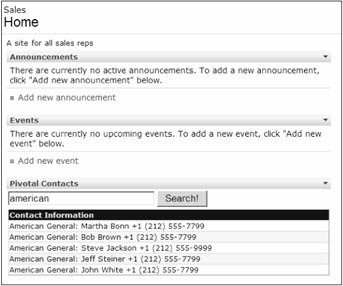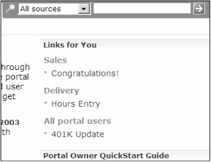End-User Challenges
End- User Challenges
Global competition, or globalization, is now the major economic force shaping business decisions. The traditional long- term relationship between companies and their employees is extinct. Companies are constantly looking for ways to make employees more productive in an increasingly competitive marketplace , cut costs, and improve productivity. For their part, employees are typically less loyal to their companies. Today's employees are just as likely to start their own businesses as they are to bring new ideas to their employer. At the same time, technology is creating an increasingly complex work environment. All of these factors combine to create special challenges for businesses and especially end users.
Desktop and Application Complexity
When the desktop metaphor was introduced, it offered a simplified mechanism for interacting with a new, complex, and often scary appliance ”the personal computer. The success of the desktop metaphor was that it simplified interaction with a computer. Nontechnical people were not required to learn complex function key combinations in order to use the computer. This metaphor ”and above all its simplifying effect ”was responsible for the success of graphic operating systems.
Early on, of course, there were several operating systems from several vendors that used the desktop metaphor. Each of these, Apple, IBM, and Microsoft, were competing to dominate the personal computer market. As a result, vendors began to include more functionality in the operating systems. Instead of just a file explorer, computers were loaded with all kinds of applets for managing every aspect of the computer. Vendors even shipped the computer with simple games that became a standard part of the operating system.
Later, after Microsoft had established clear dominance with Windows, it used the operating system to compete against other companies that introduced new technologies. The most famous example of this, of course, is the fight over the Netscape browser. Ultimately, Microsoft was found guilty of using its operating system to unfairly compete against Netscape. However, the constant fear of a small rival suddenly taking over the marketplace has consistently driven Microsoft to add more and more features to its operating system. As a result, the typical desktop is now awash in functionality. You not only have every line-of-business application you need to do your daily job, but you also have CD players, DVD players, and games. You have three or four different document editors available to you. You have two or three ways to get e-mail. Applications have followed suit as well by adding more and more features, reports , and integration points. The desktop and the applications it hosts are complex all over again.
Along with mounting complexity, users are also faced with a lack of standards for application behavior and integration. The most obvious example of this problem can be seen in the use of passwords. Users are now forced to maintain upwards of ten different sets of credentials to access all the client-server, browser-based, and Internet applications they need on a daily basis. Typically, each of these applications has different rules for password length and design. The result is that users are unable to remember all of their credentials without recording them somewhere such as on a Personal Digital Assistant (PDA).
Not only are users forced to manage several sets of credentials, they are also quite often forced to have intimate knowledge of the data sources utilized by applications. A typical example of this intimate knowledge is when an application log-in screen prompts users to select the database or domain they want to access. This seemingly simple request actually forces an end user to understand the network topology of the organization. This is a ridiculous requirement to place on an end user. This same intimate knowledge is also required to access file servers, mapped network drives , and printers.
As if the complexity and variety of information systems were not enough, users are also faced with an explosion of data contained in these systems. A typical organization might have as many as eight customer databases crossing several isolated systems such as Customer Relationship Management (CRM), Enterprise Resource Planning (ERP), multiple spreadsheets, and documents. Each of these systems has a reporting mechanism to access the data, but there is generally no way to see all of the data together to create a single view of a customer, supplier, or partner. Consequently, users are forced to create manual systems to collect and analyze information. This is often done by reentering information into Excel spreadsheets.
In addition to the challenges posed by most information systems, end users have their own personal challenges. Increasingly end users are working from alternate locations other than the central company headquarters. Workers today are highly mobile; they work from home, they work from the road, and they work from other countries . They need constant access to systems even when they are completely disconnected from a network. Many organizations are nothing more than decentralized virtual teams . Working through e-mail and conferences, it is now possible to work with someone for many years and never meet them face to face.
All of this is to say that the computing environment for most end users has become unbearably complicated. In this environment, end users are crying out for simplicity and consolidation. They need tools that give them a more personal view of enterprise resources to cut through the layers of complexity and make them more productive.
Stop for a moment and consider the role of Microsoft Outlook in most organizations. Microsoft Outlook is truly the workhorse of corporate America. Outlook is often the first application an end user opens at the beginning of the day and the last one closed at night. Why? The answer is because end users are trying to impose simplification by using Microsoft Outlook to access their enterprise resources.
Think about it. Your organization may have a document management system, but you generally get your documents as e-mail attachments. Your organization may have an enterprise reporting system, but you get your reports through e-mail as well. This is because end users do not want to use the document management client or wade through the hundreds of reports available in the enterprise reporting system. These systems are too painful to access and too complicated to use. What's more, the end user has probably forgotten her password for the document management system and isn't about to spend 30 minutes on the phone with the help desk to get it reset.
System complexity and variety, overwhelming amounts of data, and workstyle challenges have all led end users to a frustrating relationship with their computers. They are begging for simplification, but each new effort rolled out by the IT department only seems to add to the problems. The key to solving this problem lies in creating a user experience that truly consolidates and simplifies .
I should note that it is certainly arguable that SharePoint Portal Server is simply a Microsoft solution to the very complexity the company created in the first place. Although this may be true, the Microsoft foundation in many organizations will not change. It is the rare company indeed that can afford to jettison Microsoft Office and the Windows operating system for a new infrastructure. Therefore, the goal of this book will be to address the issues of complexity head on and try to create a work environment that leads to increased productivity and decreased frustration.
Key SharePoint Features
Although Microsoft SharePoint has a vast numbers of features, a couple are worth mentioning at this early stage because they directly address the issues of consolidation and simplification. First, Microsoft SharePoint allows an organization to consolidate views of enterprise systems directly in the portal through the use of web parts . Web parts are programmable elements created using Visual Studio .NET that can access enterprise resources and bring them into the portal. Using these programmable elements, you can create views that cross systems and deliver personalized content to end users. Figure 1-1 shows a typical custom web part accessing a customer database to retrieve phone numbers.

Figure 1-1: A custom web part
Second, when creating these web parts, you can make use of the Microsoft Single Sign-On (SSO) service to act as a proxy for end users when accessing systems. The SSO solution provided by SharePoint stores credentials for line-of-business systems in a centralized data store that can be accessed by authorized web parts. This service reduces the need for end users to remember and enter different credentials for different systems.
The third key element of SharePoint is the audience concept. With audiences, you can target content directly to a set of users such as "Sales" or "Customer Service." SharePoint Portal Server allows you to define audiences and recognizes audience members when they enter the portal. Figure 1-2 shows an example of targeted content appearing under the Links for You section of the portal home page.

Figure 1-2: Targeted content in the portal
EAN: N/A
Pages: 92